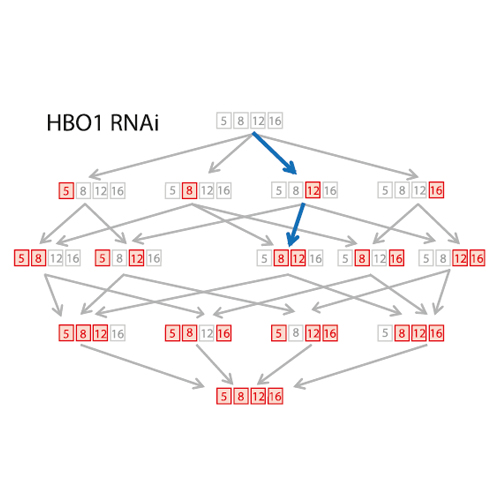Global and Specific Responses of the Histone Acetylome to Systematic Perturbation
08-Jan-2015
Molecular Cell, 2015, doi:10.1016/j.molcel.2014.12.008, 57, 1–13, published on 08.01.2015
Molecular Cell, online article
Molecular Cell, online article
Regulation of histone acetylation is fundamental to the utilization of eukaryotic genomes in chromatin. Aberrant acetylation contributes to disease and can be clinically combated by inhibiting the responsible enzymes. Our knowledge of the histone acetylation system is patchy because we so far lacked the methodology to describe acetylation patterns and their genesis by integrated enzyme activities. We devised a generally applicable, mass spectrometry-based strategy to precisely and accurately quantify combinatorial modification motifs. This was applied to generate a comprehensive inventory of acetylation motifs on histones H3 and H4 in Drosophila cells. Systematic depletion of known or suspected acetyltransferases and deacetylases revealed specific alterations of histone acetylation signatures, established enzyme-substrate relationships, and unveiled an extensive crosstalk between neighboring modifications. Unexpectedly, overall histone acetylation levels remained remarkably constant upon depletion of individual acetyltransferases. Conceivably, the acetylation level is adjusted to maintain the global charge neutralization of chromatin and the stability of nuclei.











